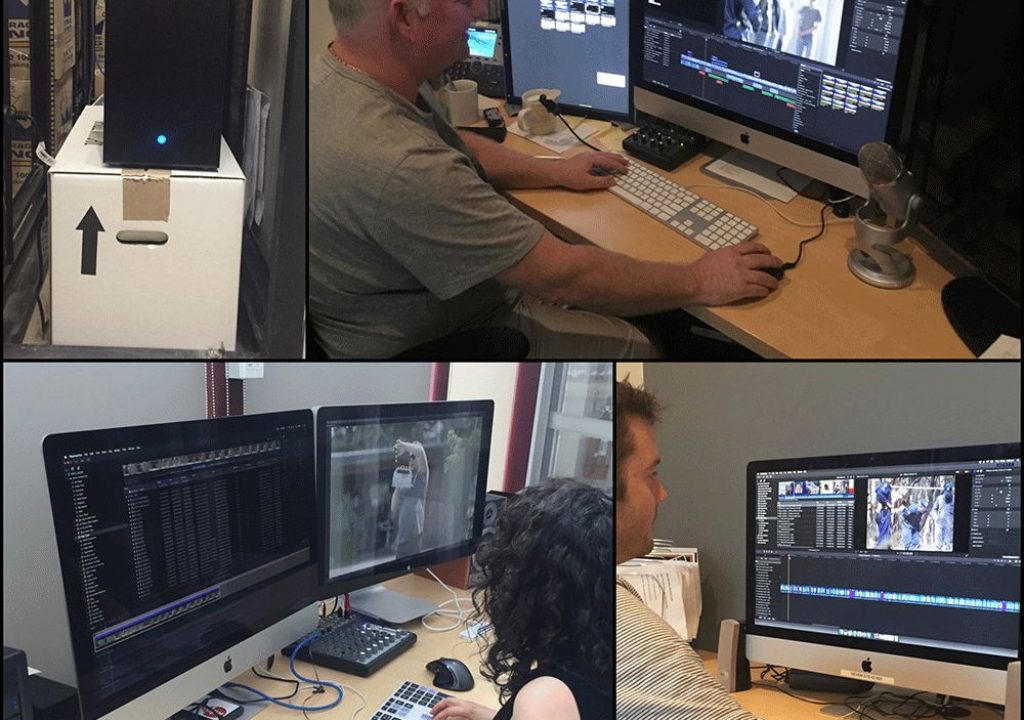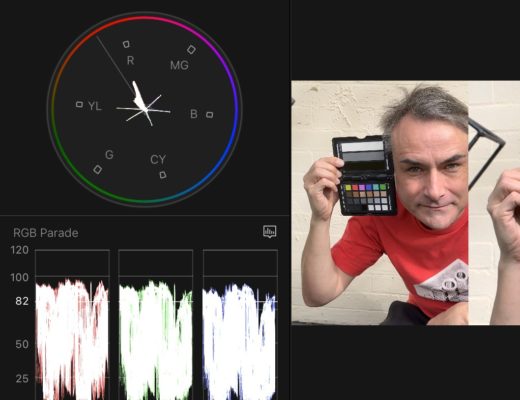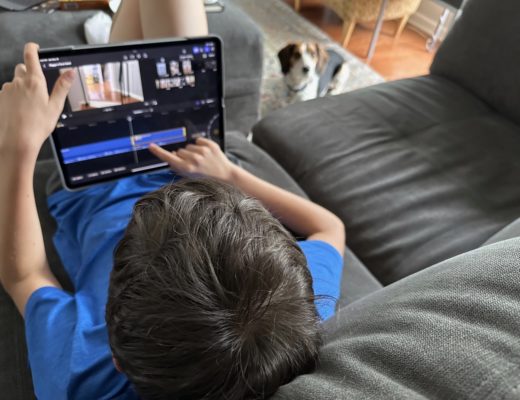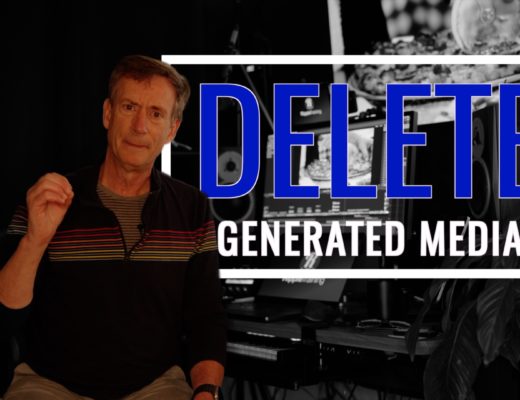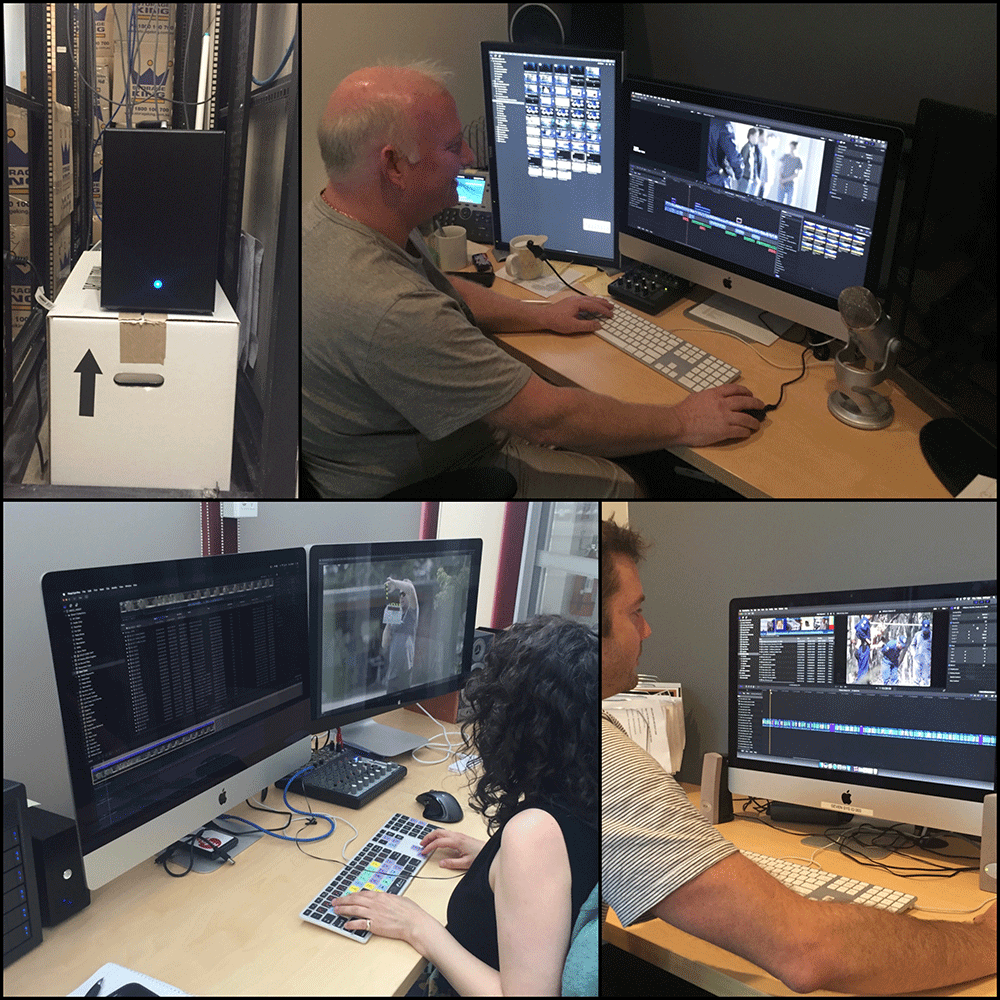
I tell people straight up that FCP X is the best NLE I have ever used: Sean Lander – Preditor
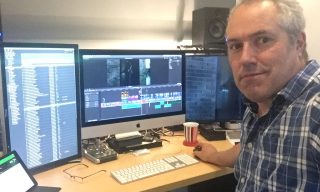
Sean Lander is an award-winning editor and producer from Melbourne, Australia. He has also been an accredited Avid trainer. Sean is part of a team working on a four-part prime-time investigative documentary television series. He says his fellow producers are “highly skilled with decades of experience.” To produce the series, Sean’s company, Rednail, was brought on by Network Seven, Australia’s highest-rating commercial network on free-to-air television.
The show is in-progress, and some of its details must be kept private.
Why are we talking about this show? The producers decided to veer from long-standing television tradition and use Apple’s Final Cut Pro X as the center of their post universe. Sean chose Final Cut Pro X because of its speed, ease of use, versatility, and power. Their show is multi-faceted and works with multiple video formats, high-speed cameras, and complex graphics. An entire staff of producers and post-production crew members contribute to the logging, building, and refining of the show. Excellence is demanded on a short schedule.
I have written a lot about Final Cut Pro X (workflow, opinion, evangelist and a few tweets), but my experience has primarily been with feature films. I am less qualified to speak about the special needs of a multi-cam, multi-format network television series and how Final Cut Pro X meets the challenge and impacts the bottom line of a production. Sean was kind enough to have a dialog with me about these aspects of his current project.

Mike Matzdorff: I know you cannot share the name of the show and certain details. Can you share the scope? How many episodes? How long is each episode?
Sean Lander: We are working on four episodes of an investigative documentary series: two sixty-minute episodes and two ninety-minute episodes. They are to be aired on Australian prime time television in 2017.
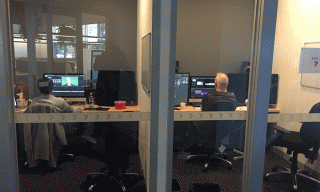 MM: What is the total membership of your team—editors, assistants, producers, etcetera—who are using Final Cut Pro X?
MM: What is the total membership of your team—editors, assistants, producers, etcetera—who are using Final Cut Pro X?
SL: We have two editors, one assistant editor, three story producers, a series producer, and an executive producer.
MM: You used to be an Avid user and trainer, what made you choose Final Cut Pro X for this show?
SL: There is nothing as fast and flexible as Final Cut Pro X out there. On this job, the budget is tight, the timeframe short, and yet they want a premium look—something that is impossible to achieve with Avid Media Composer, the conventional NLE of broadcast television.
MM: If you had to name the top three reasons to choose Final Cut Pro X over Avid for your particular show, what would they be?
SL: Just three? There are probably a hundred more, but for this job, I would choose these three:
- Speed to edit, to experiment, to render, and to export.
- The organization and powerful metadata available through Final Cut Pro X—specifically, being able to find the clips you are looking for as soon as you need them.
- Ease of use. Being able to quickly teach producers how to use Final Cut Pro X to build the story has meant the edit is starting from a much more advanced state.
I have been using Final Cut Pro X since its release, and it has become my favorite NLE. I cannot talk about it without mentioning another thing that makes Final Cut Pro X so powerful: the incredibly vibrant plugin community supporting it. With developers like CoreMelt, Motion VFX, and a whole host of others, Final Cut Pro X is turned from what is already a pretty amazing NLE in terms of built-in effects to a truly unrivaled one. There is nothing you could ever want for, whether it be stabilization, motion-tracking, or even VR. With this support, we can achieve much more than any other NLE, including Avid Symphony. What is best of all is that most of the plugins are well under $100, ridiculously inexpensive.
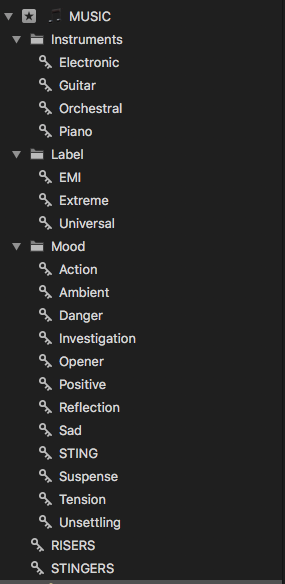 MM: Are you editing camera and sound original media? What format(s)?
MM: Are you editing camera and sound original media? What format(s)?
SL: We are editing camera original material, which consists of:
- Sony F55 HD 1080p various frame rates as high as 200 fps, as well as 4K for some shots.
- Sony A7S for Movi shots 1080p at 50fps.
- DJI Phantom Inspire Pro 1080p and 4K.
- Retrieved archive footage from the network news archive, which had all been ingested at XDCam MXF 50mbs, in a range of sizes and resolutions from 4:3 – 14:9 and 16:9
- A myriad of archival footage, surveillance footage, home video, and photographs.
With a couple exceptions, we ingest camera originals.
There is nothing as fast and flexible as Final Cut Pro X.
On this job, the budget is tight, the timeframe short, and yet they want a premium look—something that is impossible to achieve with Avid Media Composer, the conventional NLE of broadcast television.
Sean Lander – Preditor
MM: Are you working with dual system sound? Syncing with picture?
SL: We are shooting dual system because most of the footage is off speed—sometimes as high as 200 frames per second—so syncing is done in multi-cam clips with slates to sync. We are shooting mostly Sony F55, which is native.
 MM: Are you changing speeds to sync in Final Cut Pro X, or just not putting any sound on that material?
MM: Are you changing speeds to sync in Final Cut Pro X, or just not putting any sound on that material?
SL: For the off-speed footage, we are changing speeds inside multi-cam clips. Our assistant spends quite a lot of time syncing, prepping, etcetera, because of the slo-mo. Her other duties include: camera archives, ingest, tags, rejects, keywords, auditions, and more. She has remarked that she enjoys not being constantly interrupted by the editors asking for shots they can’t find or the producers asking how to do things. A tribute to the organizational power of Final Cut Pro X.
MM: What steps are between Final Cut Pro X and broadcast?
SL: We will be handing off to a colorist who will do the grade in DaVinci Resolve. Sound mix will be going out to ProTools. It will be broadcast at 1080i.
Another thing that makes FCP X so powerful
is the incredibly vibrant plugin community supporting it.
Sean Lander – Preditor
MM: How was the use of Final Cut Pro X greeted by the network?
SL: The executive producer and I go back a long time, and she trusted me when I said Final Cut Pro X was going to be the best solution for this job, but there was a fair bit of concern shown by the network. The network was worried about things like how we would integrate with their Avid promos department, as well as the bad press Final Cut Pro X had received. Also, we did not want to go with their favored supplier of Avid ISIS shared storage. The Lumaforge Jellyfish was my first choice for our shared storage. The network eventually agreed to use Final Cut Pro X but not to purchase the Jellyfish. (I purchased the Jellyfish and rented it to them.)
I don’t think the network regrets it though. The network has already remarked how polished the show looks coming out of Final Cut Pro X. We were lucky the infrastructure was already in place. Installing the Jellyfish was a snap and has been very impressive in terms of speed. We rarely need to render anything. LumaForge has been top notch in terms of service and support.
MM: Did you have a crew familiar with Final Cut Pro X? Can you get into any of your conversations with them?
SL: The whole team, apart from two producers who have only limited experience with Final Cut Pro X, were brand new to the program.
MM: Were they open to it? Resistant? Were they happy they went along?
SL: Yes. All came on board with an air of excitement yet a little trepidation because of all the negativity surrounding Final Cut Pro X. After getting up to speed on Final Cut Pro X, the first producer gushed about it. She never could understand Avid—it is difficult to organize and easy to get out of sync. On Avid, she eventually reverted to building a paper edit, which is not only painful but also offers no knowledge of inflection or style of what is being said.
With Final Cut Pro X, a high point for everyone is ease of use and power, and that translates into very useful string-outs and pre-builds.
Our other producer is even less tech savvy and gives hand-written notes. He uses the Avid on other jobs but mainly as a viewing station to do basic logging. He cautiously tried Final Cut Pro X, then started adding b-roll, then building rough assemblies, and is now having a ball.
The executive producer was in the same boat. She is not a fan of technology and had minimal contact with the Avid—adding markers and viewing footage—but I have encouraged her to give Final Cut Pro X a try. Now she is on it every day, making changes to the producer string outs, adding to-do markers or rough cuts, and writing voice over. She even admitted that she is really enjoying being so much more hands-on with the process.
MM: From a time/money perspective, what benefits can you attribute to using FCP X?
SL: This job has already shown how much can be saved by going with a Final Cut Pro X / LumaForge workflow. The budget for equipment was almost half of what they were quoted for an Avid solution. I know from experience that where we are after about six weeks is two to three weeks ahead of where we would be on Avid. We are miles in front. Plus, we are so enjoying the editing process as it allows ideas to flow so much more freely. Also, I have always on-lined my own work, and that motivated the production to ask for me on this job. The benefit is that money that would normally go to a utilitarian online/grader is now going solely to a very experienced colorist. Also the fact that all the interviews are green screen and can be keyed in FCP X, without the need to render, is a great benefit.
Being able to very quickly teach producers
how to use FCP X to build the story has meant the edit is starting from a much more advanced state.
Sean Lander – Preditor

MM: How do you feel about usurping old style workflows? Final Cut Pro X can eliminate a sound conform, an online edit, some titling, and VFX work. You may be putting some people out of work!
SL: I have always been a champion of doing things more efficiently and have built my career on being the guy who is always pushing the boundaries. If that’s what you are asking, I say, “Bring it on!”
MM: What would it take for Final Cut Pro X to steal the graphics job from After Effects? Possible? Reasonable?
SL: To be honest, I think it could technically be done now. However, finding an artist who would use Final Cut Pro X over After Effects would be nearly impossible. It’s hard enough finding editors!
Good freelance graphic artists are hard to find, too, and you need a big budget if you want 100 percent of their time. Graphically, this show is quite demanding, so anything we could do to lighten the load on the artist would make life easier for all of us.
Normally, with Avid, the graphic artist would supply all the elements. So titles, name supers, location supers, etcetera are time-consuming drudgery.
So I suggested Apple Motion. That way, the graphic artist could create one template, and we could do all the rest of the work. He agreed to it, and he has only had to produce four title templates. If we had been on Avid, it would have been more like forty to fifty title templates. Then, of course, if any part of a title had to change, we would have had to go back to the graphic artist for changes.
Now we handle all of that in-house. Our artist also learned how to rig, so we can even turn on and off build-ins and build-outs, change font case, etcetera. It’s a win-win!
We are pushing for more Motion templates and may even try some very complex timelines with drop-zones, custom moves, etcetera. If we do get it to work, it will make the production managers sit up and take notice of how much we have been able to reduce and refine the graphic elements process.
MM: How would you feel about going back to Avid?
SL: I have been cutting on Avid for 25 years now. It was my first love, and although I have a soft spot in my heart for it (especially trim mode), when I return to it for long periods, I feel like I am editing with one hand tied behind my back. Plus there just is no joy in it.
Somehow Final Cut Pro X makes editing fun.
Avid is the opposite of that. It is about process only. Your mind is equally focused on how to make the software do what you want rather than what can be achieved by the art of putting one shot after another.
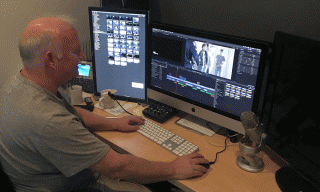 MM: What would you tell someone considering Final Cut Pro X who is on the fence?
MM: What would you tell someone considering Final Cut Pro X who is on the fence?
SL: I tell people straight up that Final Cut Pro X is the best NLE I have ever used. This statement often gets some raised eyebrows as I have been in the industry so long and have trained hundreds of editors.
I tell people just to try it, but to try it on a “proper job” and to expect to hate it for a week or two. I promise them that if they go in with an open mind, everything will click, and they will end up loving it. If you are a true editor who is in love with editing, it can only be this way. (If you are an engineer who loves pressing buttons to make stuff happen, then you are probably never going to get Final Cut Pro X. The TV world is full of process editors, the ones who don’t notice the actor blinked just before the cut, the ones who cut to the beat but don’t understand the rhythm of a sequence.)
There’s a groundswell of enthusiasm in the Australian industry about Final Cut Pro X.
MM: Where did/do you train?
SL: I train people at their locations on their systems. I used to run a facility with four edit systems, but those days are long gone.
(Editor’s Note: Sean was the accredited Avid trainer for the South Eastern States of Australia.)
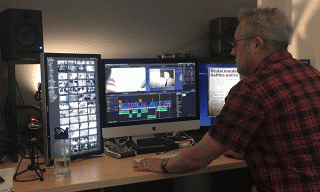 MM: Can you give me a highlight from this project?
MM: Can you give me a highlight from this project?
SL: The second editor working with me on this job (who has about the same amount of experience as me and is regarded as one of Melbourne’s best) came onto this job as a fence sitter, but with an open mind. After half a day of getting him up-to-speed with the basics, I set him going with the usual advice: “You will hate it at first. Think different, and you will grow to love it.”
Each day, I would go into his suite to give him two tips about Final Cut Pro X. I could see by the look on his face that he was realizing just how powerful this program is. I have been passing tips and little lessons on to him for two weeks now.
He came in to my suite a couple of days ago and said how totally blown away he was by the power, speed, ease of use, and elegance of the program. The most powerful of all, he said, were rejecting, keywording and favoriting clips. He’s right, of course. This simple act empowers the editor to such an extent unlike any other NLE we have ever used.
Today, he heard there was a 20-percent-off iTunes gift cards sale, and he hightailed it down to the store and bought enough to purchase Final Cut Pro X.
His next question was how to convert his Avid projects at home to Final Cut Pro X.

Filmtools
Filmmakers go-to destination for pre-production, production & post production equipment!
Shop Now